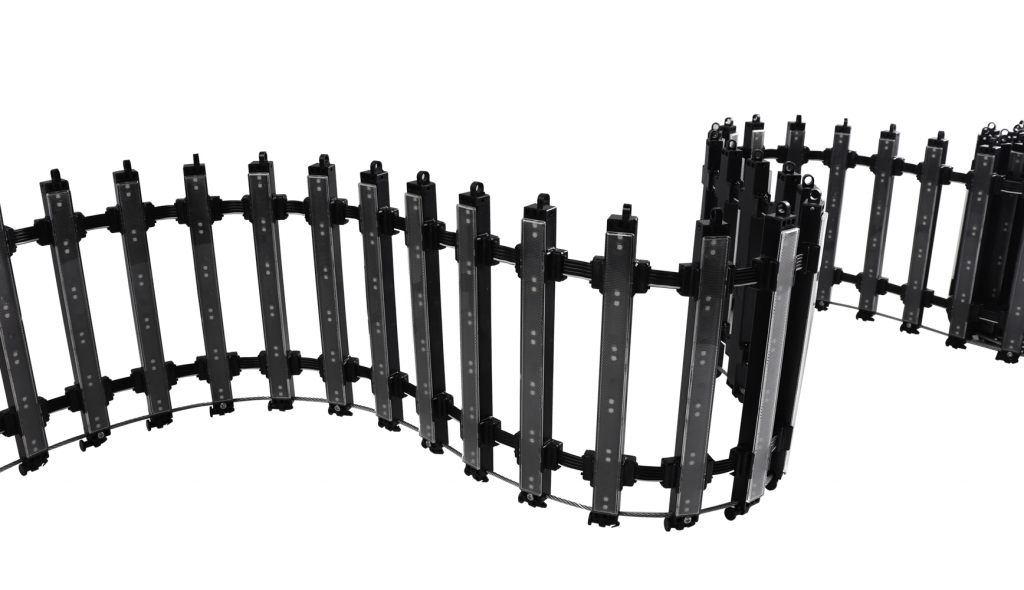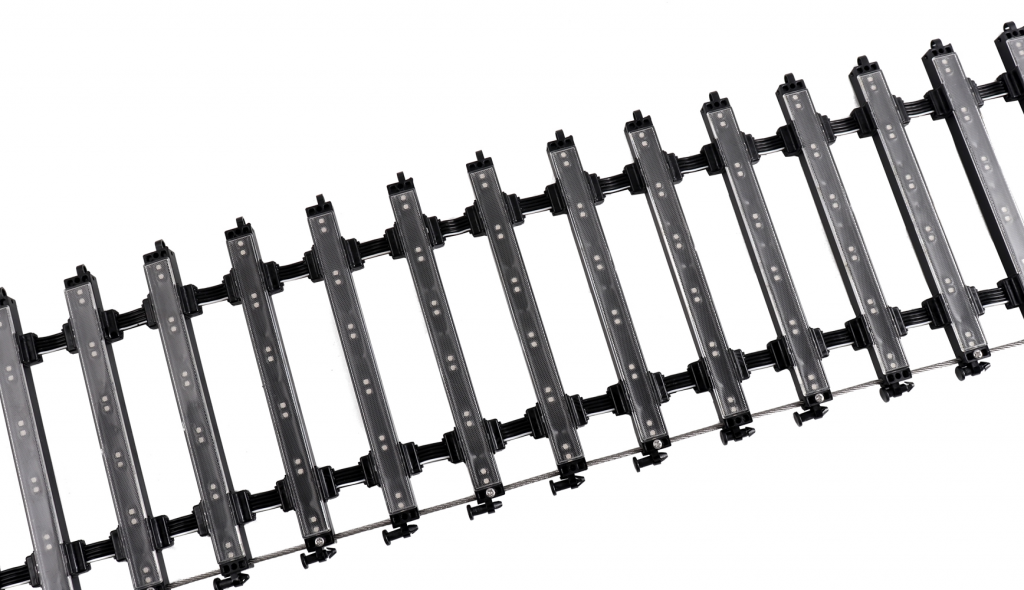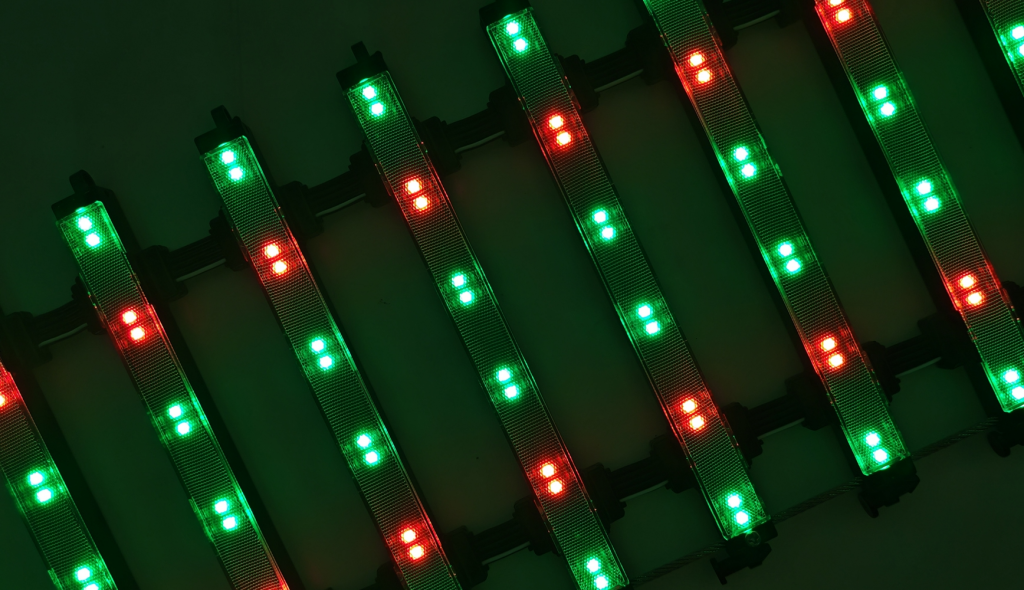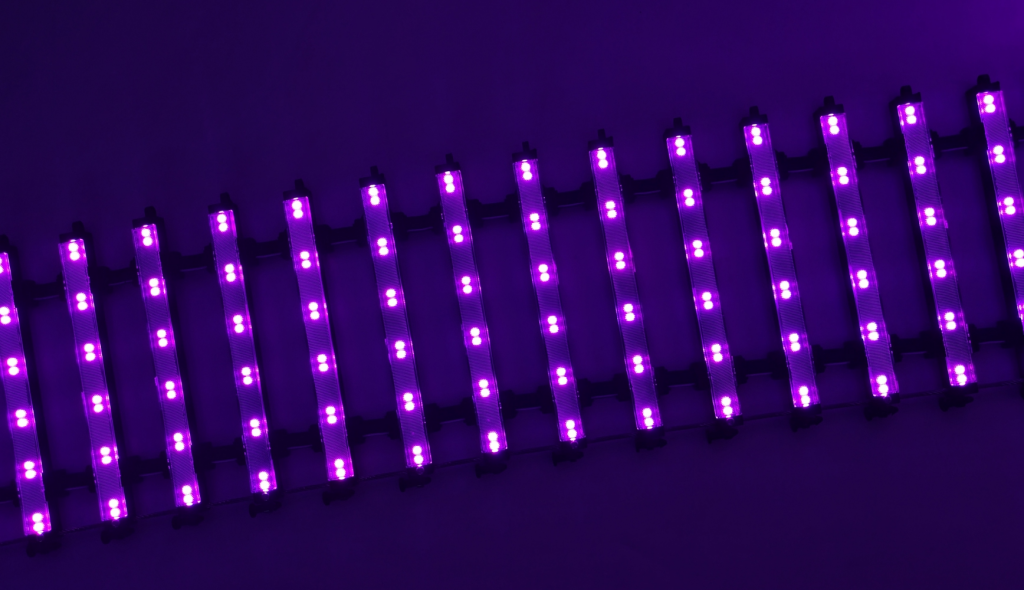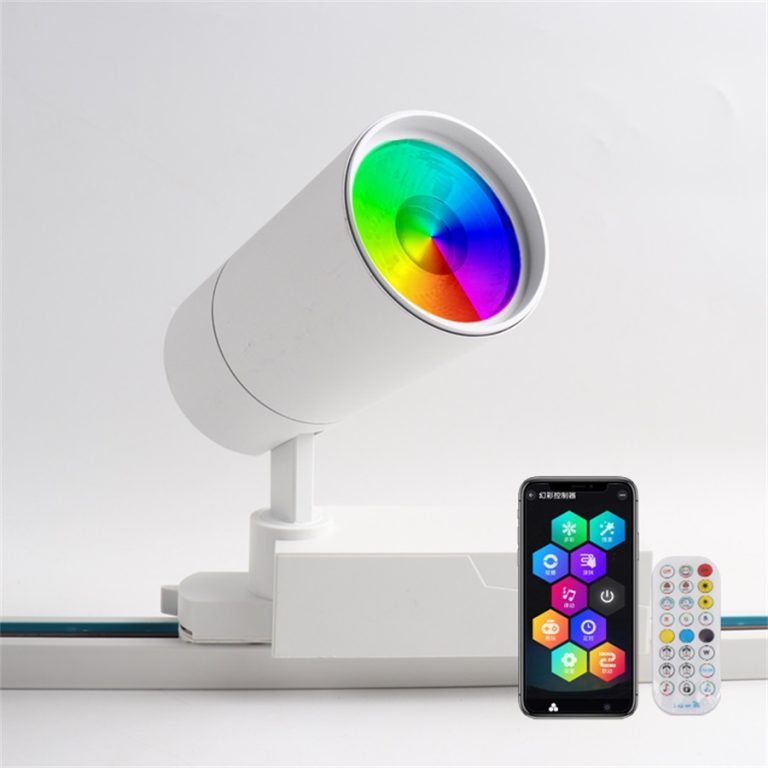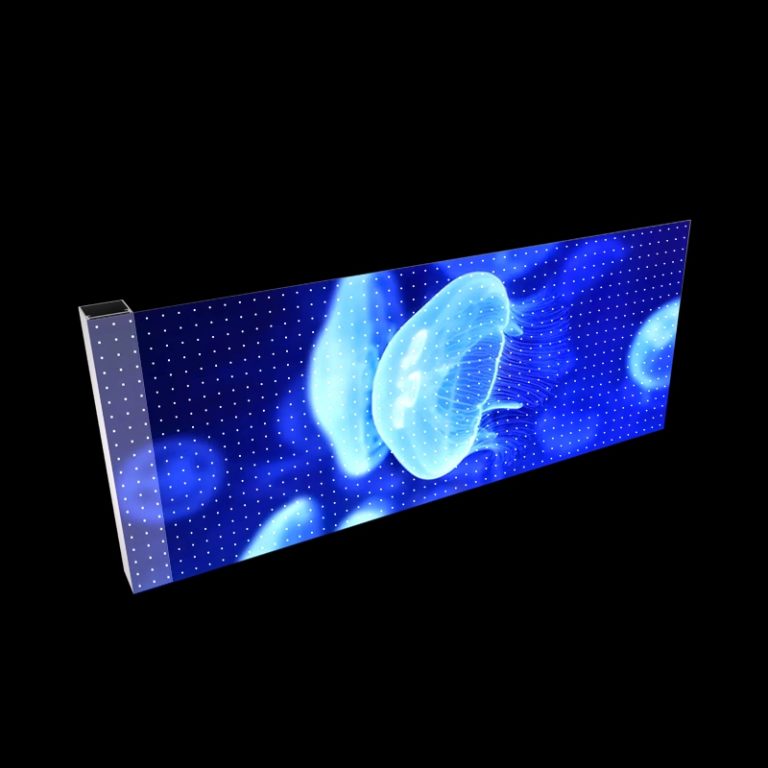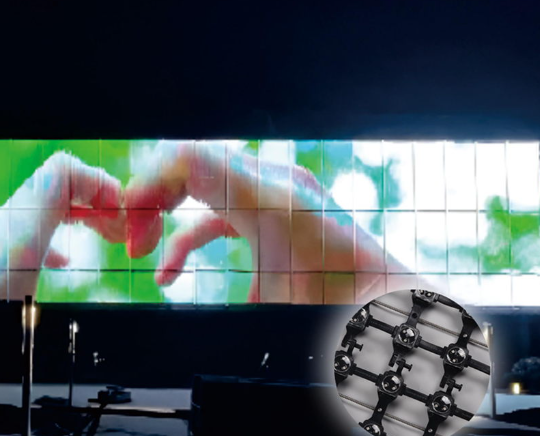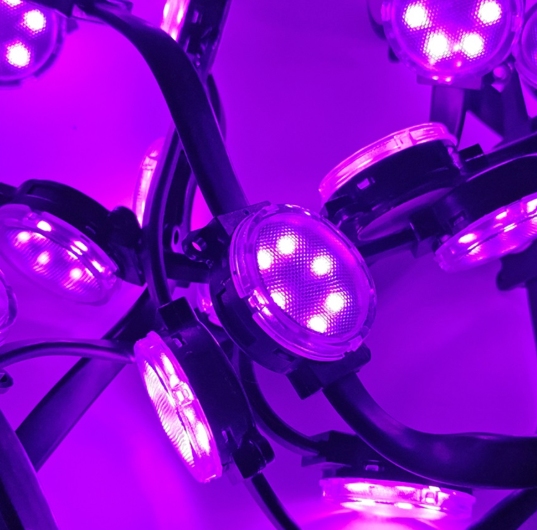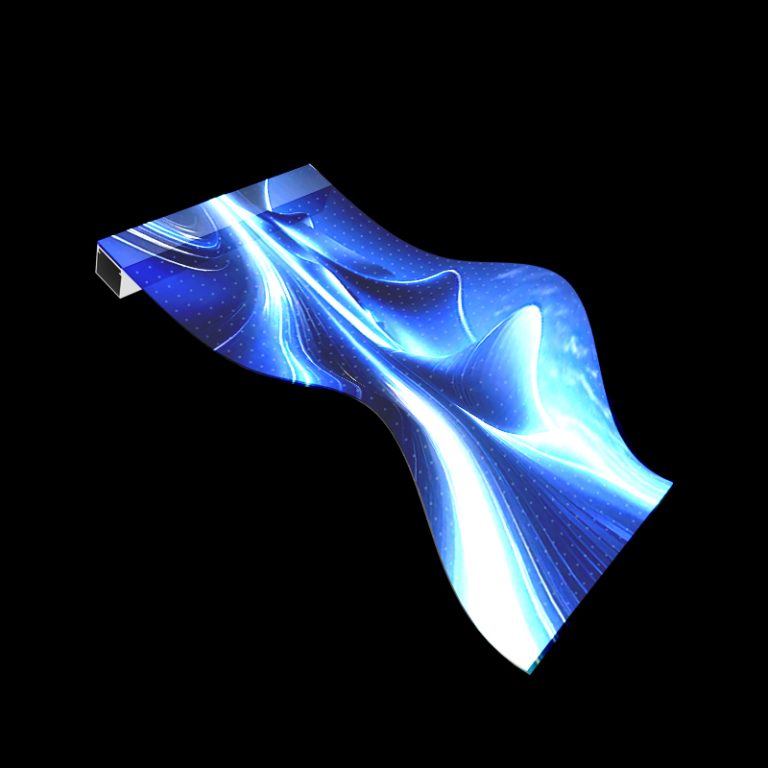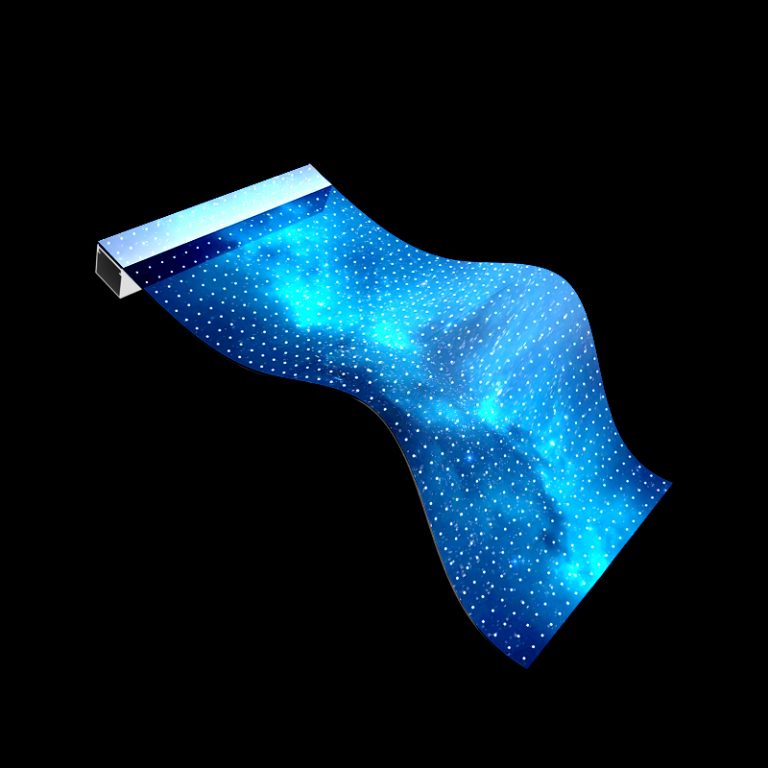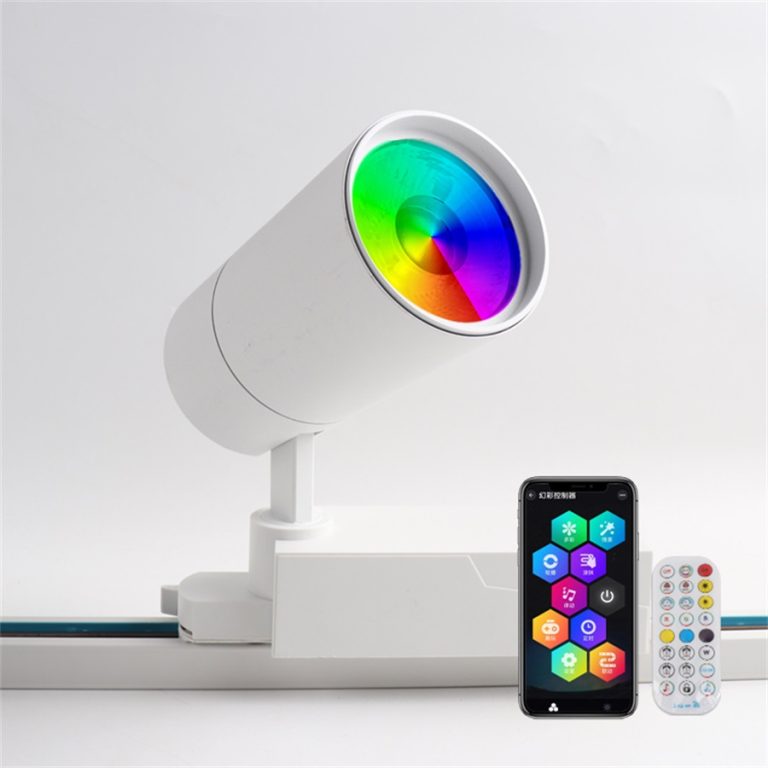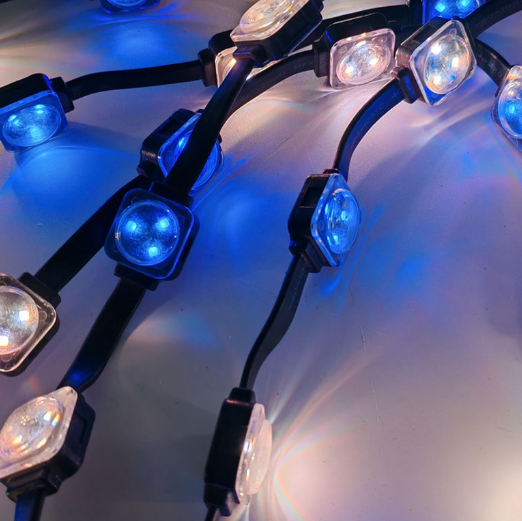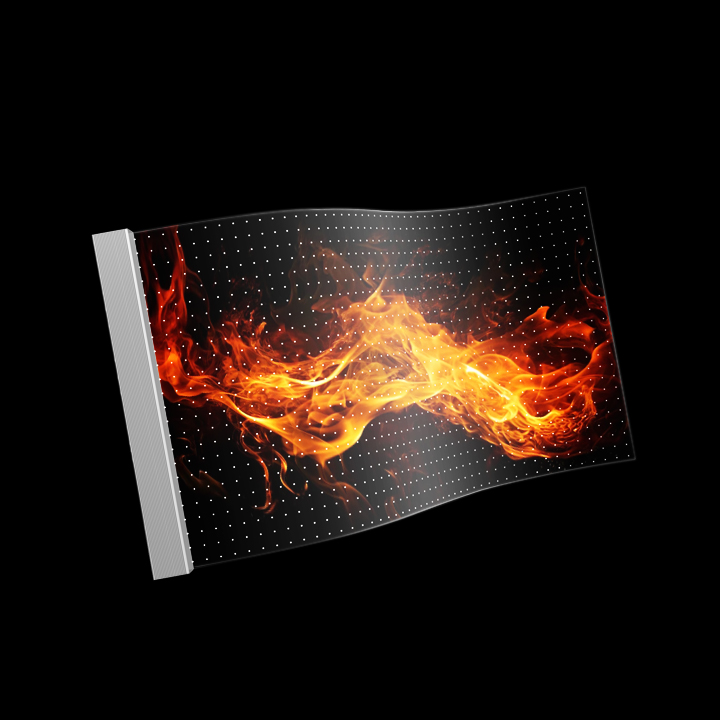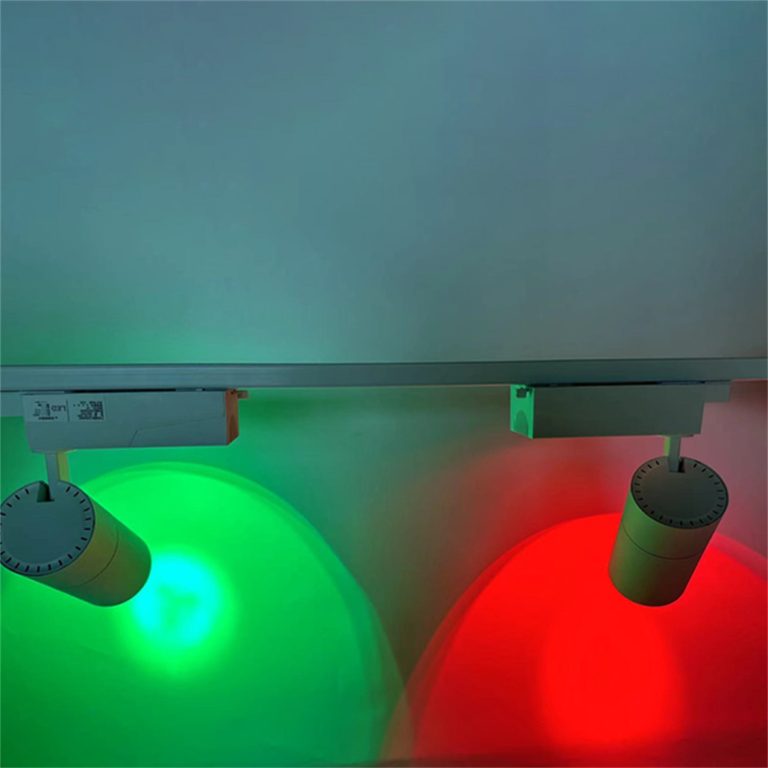Exploring the Dimensions of Transparent LED Film Displays
Variability in Display Sizes
Transparent LED film displays offer a wide range of size options, catering to diverse applications and installation environments. The flexibility in sizing is one of the key advantages of these displays.
Standard Sizes Available in the Market
Transparent LED film, standard sizes such as 240×960 mm, or 240×1400 mm. module sizes. These are standard sizes that will fit things like glass and walls in typical architecture. They are modular in nature, these can be scaled easily, which means you can use them for small retail windows or building facades.
Customizable Size Options for Specific Applications
Transparent LED film displays can be custom-built to suit the project, above & beyond standard sizes. Such customizations would be to change the dimensions and the shape of the module to cater to any unique architectural features or some creative touch. These may also be used for a curved surface or an irregular space – the virtue of their customizability makes them blend into the environment with unlimited creative possibilities.
Factors Influencing Size Selection
Choosing the right size for a transparent LED film display involves considering several factors that impact both functionality and aesthetics.
Application-Specific Requirements
The selection of display size is heavily influenced by the intended application. For instance, retail environments may require smaller, more discrete displays that enhance product visibility without overwhelming the space. In contrast, large public venues might opt for expansive displays that capture attention from a distance. Understanding the specific needs of each application is crucial in determining the appropriate size.
Architectural Considerations
Architectural details affect display size. These displays also have this amazing transparency feature, as a result of which they can blend in with the existing structure without blocking views or natural light. Thus, the window size is also dependent on the size of the wall, the curvature of the wall, and the structural stability of the CWGS.
Resolution Options for Transparent LED Film Displays
Resolution is a critical factor in determining the visual quality of transparent LED film displays. It affects how images and videos are rendered on the screen.
Understanding Resolution Specifications
Resolution is defined by pixel density, measured in dots per square meter (Dot/m²), which directly impacts image clarity and detail.
Pixel Pitch and Its Impact on Image Quality
Resolution is a critical factor affecting image clarity and quality in transparent LED film displays. Pixel pitch, defined as the distance between two adjacent pixels, directly impacts resolution. A smaller pixel pitch results in higher resolution and sharper images, making it ideal for applications where detail is paramount. Common pixel pitches range from P4 to P20, with P4 offering superior image quality due to its higher pixel density.
Commonly Used Resolutions in the Industry
Resolutions specified by the industry differ based on application requirements. P10 (10000 Dot/m²) is commonly used in medium indoor installations with moderate resolution requirements. On the other end, P4 (62500 Dot/m²) provides high pixel density for close viewing situations; used for exhibitions or high-end retail environments where image detail is critical.
Balancing Resolution with Transparency
Achieving a balance between resolution and transparency is essential to maintain both visual quality and unobstructed views through the display.
Trade-offs Between Clarity and Transparency
This is usually the case as higher pixel density usually means lower transparency. That trade-off comes in the form of total transparency versus high-quality images. So, the good resolution choice integrates clarity needs with high levels of transparency that do not block ambient lighting or visibility through glass surfaces.
Technological Innovations Enhancing Resolution without Compromising Transparency
More Big Tech Updates The latest progress has been to improve resolution while keeping transparency. When achieving up to 95% transmittance rates with zero image quality loss, is possible only thanks to some innovations like highly precise-located micrometer-level metal grids and ultra-engaged crystal plating methods. This technology enables transparent LED film displays to deliver strong visuals while remaining nearly invisible at certain ranges, allowing visual displays to not only not interfere with architectural aesthetics, but also architectural light elements.
Key Considerations for Choosing Size and Resolution
There are some main factors that you need to consider when choosing the right size or resolution of transparent LED film displays for your project which is best for performance and aesthetic integration. There are some key considerations beyond just size and resolution that must be addressed during the selection process of transparent LED film displays to ensure both optimal performance and aesthetic integration.
Application Needs and Environment
Indoor vs. Outdoor Usage
| Usage Type | Characteristics | Considerations |
| Indoor | Controlled lighting, closer viewing distances | Higher resolutions (e.g., P4 or P6) are preferable for detailed visuals. Transparency is crucial to blend with interior design. |
| Outdoor | Variable lighting, larger viewing distances | Larger sizes with lower resolutions (e.g., P10 or P20) can suffice due to increased viewing distance. Durability against weather conditions is vital. |
Viewing Distance and Angle Considerations
Size and resolution are dependent on the viewing distance and the angle. To enable sharper images in close-up applications like retail displays, a smaller pixel pitch is required. Visual quality considerations for far versus near field installations Pixel pitch refers to the spacing between pixels on a display and has a key role in optimizing image viewing distance. For installations such as building facades that are viewed from afar, a coarse pixel pitch may be sufficient, since larger area illumination may be achieved without sacrificing visual quality.
Integration with Existing Infrastructure
Compatibility with Architectural Design
The three-dimensional intangible nature of transparent LED film display makes it better to match the preferable visual aesthetic and taste of architecture of the installation environment. They are highly transparent and also integrate seamlessly into the spaces they occupy without disrupting the natural light or views. You could include designs that integrate into existing displays like glass panels or structural frameworks, so plan it out! A consideration is how to keep the display aligned with existing design aspects like glass panels or structural frameworks.
Installation Flexibility and Challenges
Transparent LED film displays offer a key benefit in terms of installation flexibility. This makes them easy to attach to most surfaces, including those that are curved or irregularly shaped, because they are thin and lightweight. However, the seamless look comes at the cost of installation headaches (like having a secure hold and alignment of displays).
XinHe Lighting: Pioneering Solutions in Transparent Displays
XinHe Lighting stands out as a leader in the transparent LED film display industry, offering innovative solutions that set new standards in display technology.
Overview of XinHe Lighting‘ Product Offerings
XinHe Lighting offers a broad selection of transparent LED film displays, with high transparency, flexibility and thinness. These products have been designed for minimalistic installation on glass surfaces without the requirement of added framing structures. These are products that minimize (or eliminate) hardware by fitting directly to glass – no mounting framework is required.
Unique Features of XinHe Lighting‘ Transparent LED Film Displays
XinHe’s displays boast several unique features:
- High Transparency:With transmittance rates up to 95%, these displays maintain excellent visibility while delivering vibrant images.
- Flexible Design:The ability to conform to various surface shapes allows for creative installations that enhance architectural aesthetics.
- Minimalist Installation:Easy attachment directly onto glass surfaces reduces installation complexity and costs.
Choosing the correct size and resolution of transparent LED film displays depends on the specific needs of the application, environmental requirements for installation, and integration considerations. A great example of how technological advances meet these technological demands is XinHe Lighting who offer flexible LCD that is highly transparent and still provides great visuals. Showing some parallel use cases where the tech could be utilized — XinHe Lighting illustrates how a high level of transparency radiates high-end visual quality can exceed other advanced technology to accommodate these types of flexible requirements.



